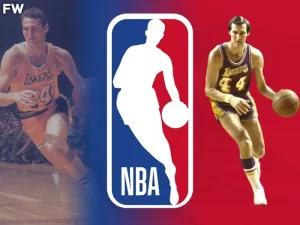I once had the thrill of interviewing Jerry West on management. He was “The Logo” for the NBA, although back then they didn’t advertise him as such. Only the Laker followers knew for sure.
In 1989 the “Showtime” Lakers were coming off back-to-back championships. Pat Riley was a year away from his first of three Coach of the Year awards. Jerry was the GM. Many people don’t know this, but starting when Jerry West was drafted in 1960 until he stepped out of the GM role in 2002, the Lakers only missed the playoffs twice. Those seasons (74-75 and 75-76) were the only two seasons out of 42 that West was not on the Laker payroll.
In 1989 I was enrolled in Pepperdine’s Executive MBA program. Our class assignment was to interview a top executive with whom we had no previous relationship or introduction about his management style.

Mr. West Returns the Call
I was an avid Laker fan, and I thought “He can only say no.” So I called the Forum, asked for West’s office, and left him a voicemail. A few hours later our receptionist called me and said “One of your friends is goofing around on the phone. He says he’s Jerry West.” Obviously, I took the call.
We met in his office underneath the stands in the Forum. It may have been 12 x 12 feet, but the magnetic boards lining the wall made it seem much smaller. Each board had an NBA team’s name on top, and magnetic placards for every player currently on that team.
I asked Jerry about how he approached the management of the Lakers. He gestured to the boards. “My job as General Manager is to put the best team on the floor that I can. I look at these boards every day and think who might be better on the Lakers? Then I look at other teams and think who they might have that will convince the team with the player I want to give him up.”
He went on to say that he was sure that business executives weren’t as singularly focused as he was. He thought about the Lakers from the moment he woke until going to sleep at night. I didn’t try to convince him that he matched the profile of many small business owners.
Jerry West on Management
As a manager, Jerry said that he believed that if you hired someone to do a job, then you needed to step back and let them do it. Pat Riley was a broadcaster with no coaching background. Jerry said that the problem with experienced coaches is that they had already been fired once. West took a flyer on Riley, but to appease the media he agreed to sit on the bench to lend advice.
“It was crazy. Riley had no idea what he was doing. He’d call to put guys in the game that we had cut the week before or to sub in guys who were already on the floor. I lasted about three games on the bench. I had to go to my office and let him learn on his own. The alternative was that I’d kill him.”
One poignant moment was when he discussed his family. I can’t imagine the burden being in the public eye brought with it. He talked about his children being bullied on the playground because the team was on a losing streak. Even worse was having his wife accosted in the supermarket aisle by a fan who was incensed over a trade.
One of his greatest tips was when we discussed keeping things in perspective. He showed me two file folders in his desk drawer. “One of these has the most complimentary of the letters I get when the team is doing well. They tell me I’m a genius. The other folder is the worst letters I get when the team is doing poorly. You can guess what they think of me.”
“Whenever we are on a streak, good or bad, I pull one of the letters from the file when we were doing the opposite. It reminds me that it wasn’t always the way it is today, and it will swing back sooner or later.”
Looking to the future
I wasn’t supposed to discuss the Lakers, but the fan in me couldn’t help it. Jerry had just drafted a guy from Yugoslavia that no one had heard of. This was well before European players dominated the top draft picks. I had to ask him about his choice.
“Wait until you see him,” West said. “Seven feet tall and he can pass the ball like Magic.”
He became the starting Laker center for the next seven years. Then Jerry West traded Vlade Divac to the Charlotte Hornets on draft night of 1996 to get the 13th pick, a teenager named Kobe Bryant.
Always looking at those boards.
We’ll miss you, Jerry.
John F. Dini develops transition and succession strategies that allow business owners to exit their companies on their own schedule, with the proceeds they seek and complete control over the process. He takes a coaching approach to client engagements, focusing on helping owners of companies with $1M to $250M in revenue achieve both their desired lifestyles and legacies.
